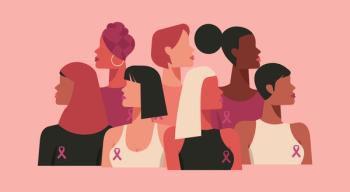
Importance of Patient Assistance Programs in Oncology
Michael Kolodziej, MD: So, the currently available patient assistance programs, offered by either pharmaceutical companies directly or through third parties, have some benefits, and they have some limits. I think everyone knows that for the direct patient assistance programs, they cannot be employed in government programs. Medicare beneficiaries, for example, and patients under classic Medicare are at risk for 20% of the cost of care. There are very few seniors in America who can afford 20% of the cost of some of these new therapies. That is just insane.
That’s only about 15% of the Medicare population, because everybody else is either in Medicare Advantage or has got secondary insurance that defrays some of that. So, Medicare is a particularly sensitive area that we need to think about, whether patient assistance can actually help them. Now, they are able to tap into patient assistance through foundations, for example. My friend Alan Balch, of the Patient Advocate Foundation, has done great work helping patients get access to drugs, getting seniors access to drugs.
There is this undercurrent, though, this concern that patient-assistance programs somehow inappropriately support the high pricing of oncologic agents. That is, if the drugs were priced at a more reasonable level, we wouldn’t need patient assistance programs. That’s a cocktail party argument. The truth is that most Americans have a very hard time meeting their deductible and their max out-of-pocket; they hit it fast. And most Americans, even with that statutory limit is $6600 this year, they have a very hard time meeting that. We need to be sensitive to that. The cost of cancer care is out of reach for a very high percentage of Americans, irrespective of patient-assistance programs by pharmaceutical companies. That is a very, very sobering thought and something we should reflect on.
Getting the word out about how we can help our members, our Aetna members, to finance the cost of their care, and get access to the care, is a challenge. Our nurse case managers are educated on the resources that exist, and they liberally dispense information. It’s been my experience, though, that this is generally not thought of as a payer function. Certainly, in my practice, and in a lot of larger practices in the United States, that patient-assistance piece is carried by the financial counselor of the practice. When a projection of the cost of care is made with the patient, and there’s identified a financial challenge, those financial counselors are pretty much in tune with what kind of resources can help that patient out. So, it has not really been a payer function.
I think it’s a mistake to become intimidated by what we perceive to be practical hurdles in getting the best care for our patients. Ultimately, all of us, irrespective of whether I’m an oncologist or a payer, are committed to making sure that we get the right care to our patients.
Newsletter
Stay ahead of policy, cost, and value—subscribe to AJMC for expert insights at the intersection of clinical care and health economics.












































